Are you curious about how keloid scars, one of the most prominent types of raised scars, form? Today, we’ll cover the formation process of keloids and discuss some of the ways they can be prevented. We’ll also chat a bit about whether it’s possible to reduce their appearance. So, let’s jump right in and find out what causes keloids, how to stop a keloid from forming, and discuss some of the signs a keloid is forming.
What Is A Keloid?
Keloids are, put simply, an overgrowth of scar tissue. Unlike normal scars, keloids extend beyond the original injury site and can even continue to grow larger over time. They often have a raised, thick, and shiny appearance, ranging in color from pink to dark brown.
Learn More: What Is A Keloid Scar?
What Causes Keloids?
The exact cause of keloid formation is not fully understood, but several factors certainly contribute to their development. One primary factor is an imbalance in the wound healing process. When the body repairs a wound, it normally produces excess collagen, which forms the structure of the scar tissue. In keloids, this collagen production goes into overdrive, leading to an abnormal accumulation of scar tissue.
Genetic predisposition also plays a role, as keloids tend to run in families. Certain ethnic groups, such as people of African, Asian, and Hispanic descent, are more prone to keloid formation. Hormonal factors, such as pregnancy or puberty, can also influence the likelihood of keloid development.
What Are The Signs A Keloid Is Forming?
As you can imagine, recognizing the early signs of keloid formation is crucial for early intervention. Initially, a keloid may appear as a slightly raised, itchy, or discolored area around a wound, not unlike a normal scar’s development. Over time, however, it may continue to grow and expand beyond the original wound site.
Other signs include pain, tenderness, and a noticeable change in texture or color. If you notice any of these symptoms, it is advisable to seek intervention sooner rather than later.
Learn More: Keloid Scar FAQ
How To Stop A Keloid From Forming: Is It Possible?
It’s usually not possible to completely prevent keloid formation. However, there are strategies to minimize their occurrence and manage their appearance:
- Promptly treat wounds, especially deep cuts or burns.
- Avoid unnecessary skin trauma and piercing if you are predisposed to keloids.
- Follow post-surgical instructions to minimize surgical scarring.
- Discuss your propensity for keloids with your surgeon if you will be having surgery.
Silicone: Does It Work?
Silicone scar products have been shown to be effective in managing keloids. These products create a protective barrier over the scar, maintaining moisture and preventing excessive collagen production. Silicone sheets (like our ScarFX sheets) or gels (like our Rejuvasil gel) can be applied to existing keloids, helping to flatten and soften their appearance over time.
Here at Rejuvaskin, we’ve packaged everything you need for scar recovery into our Scar Heal Kit. Browse our collection today and order what you need for reducing the appearance of your keloid scar!
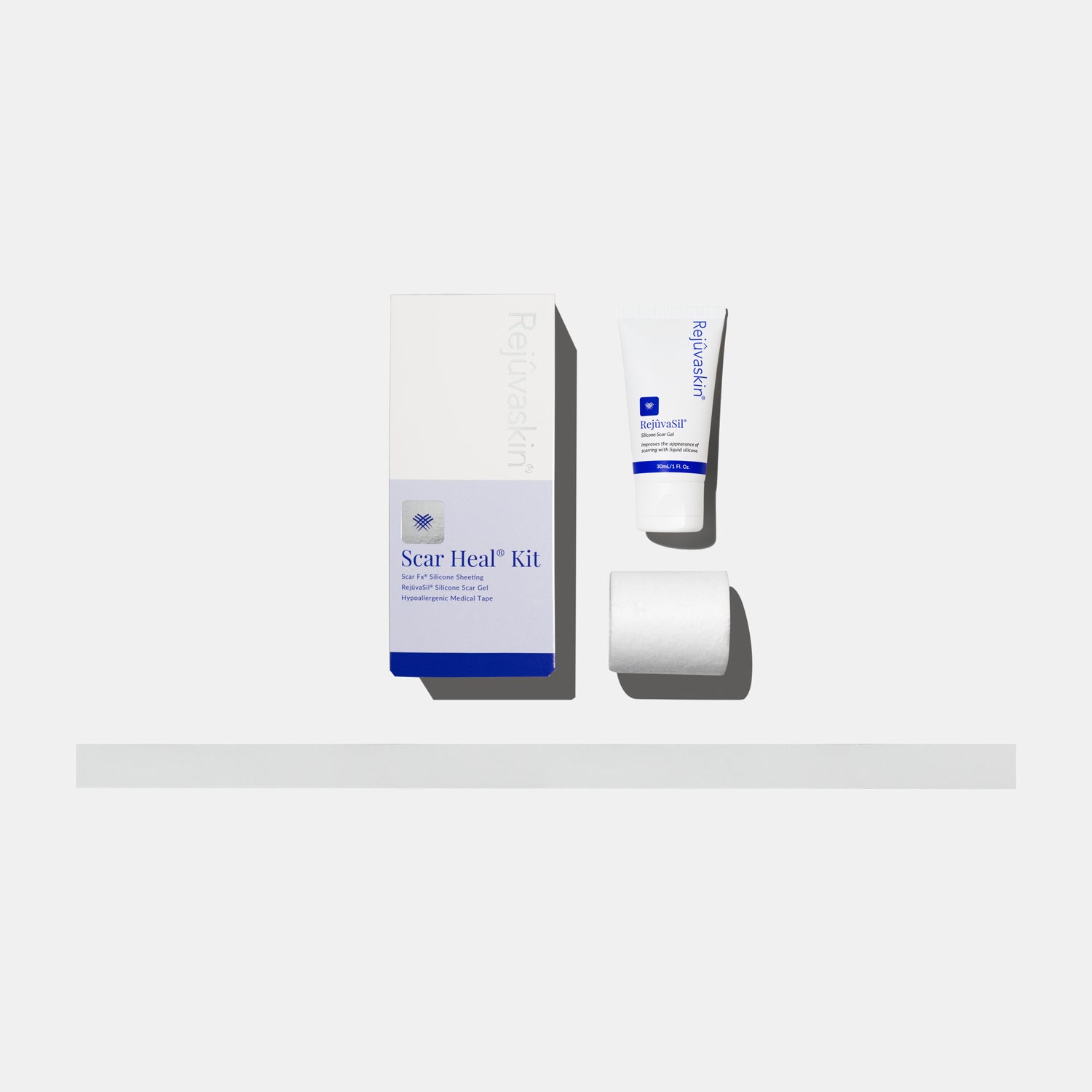


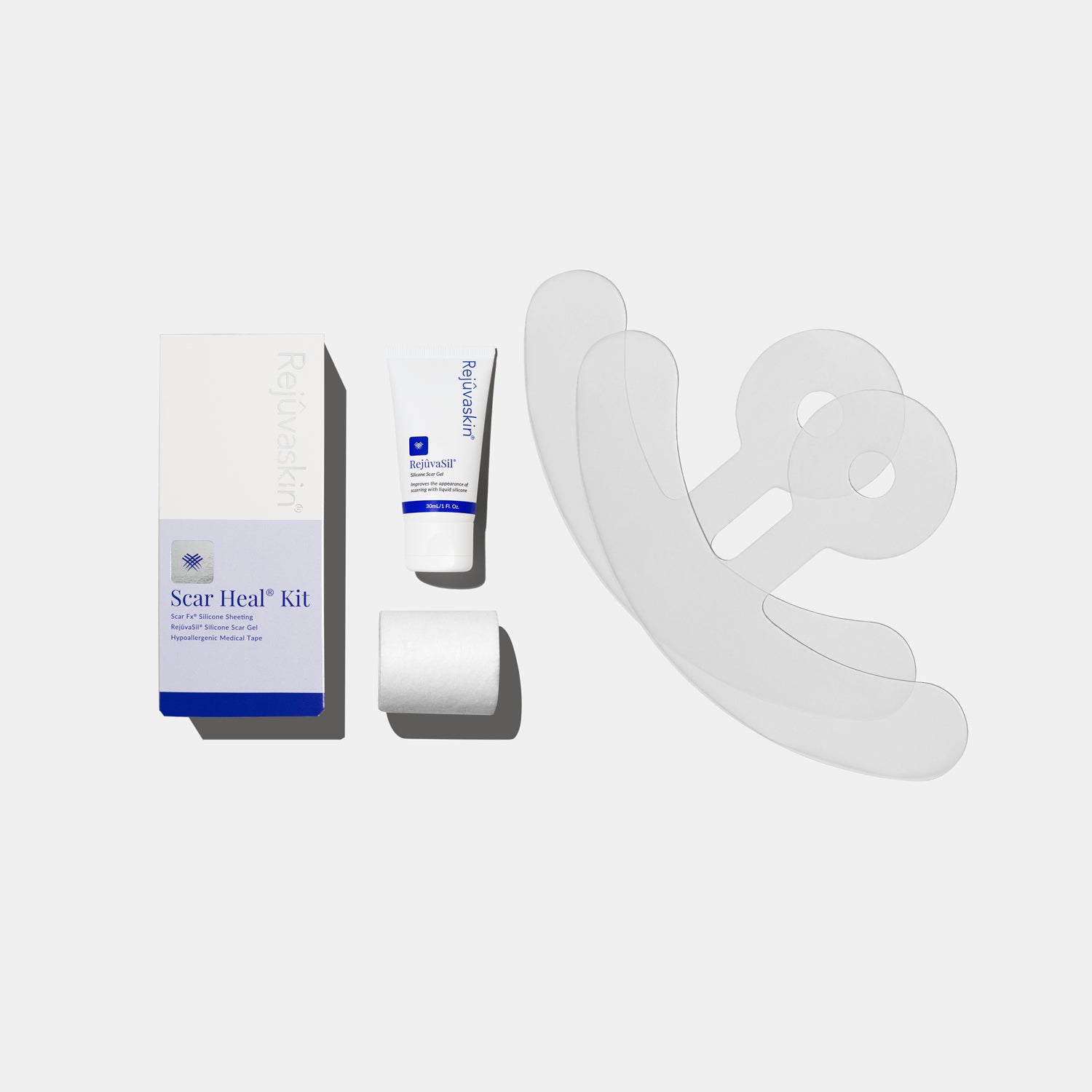
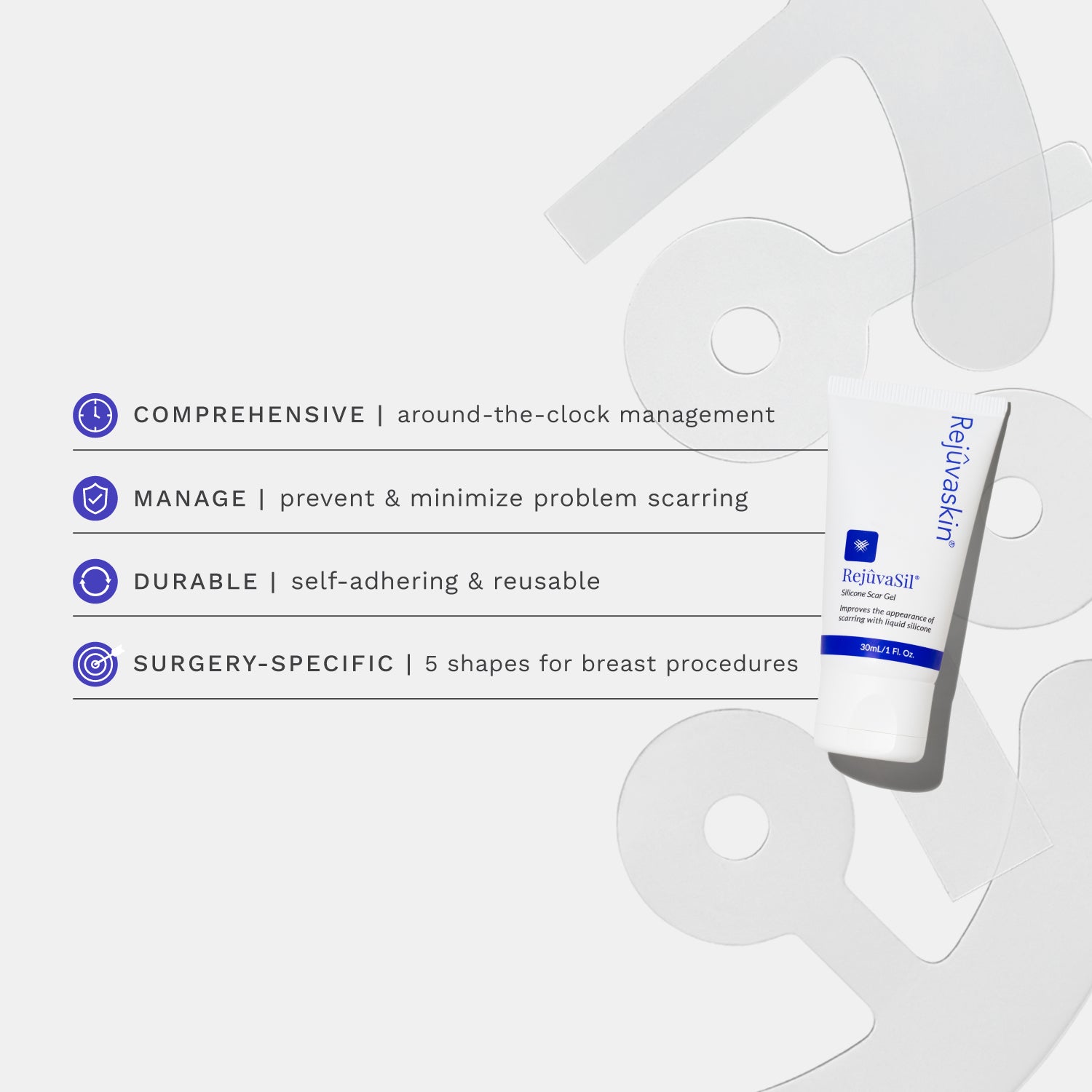
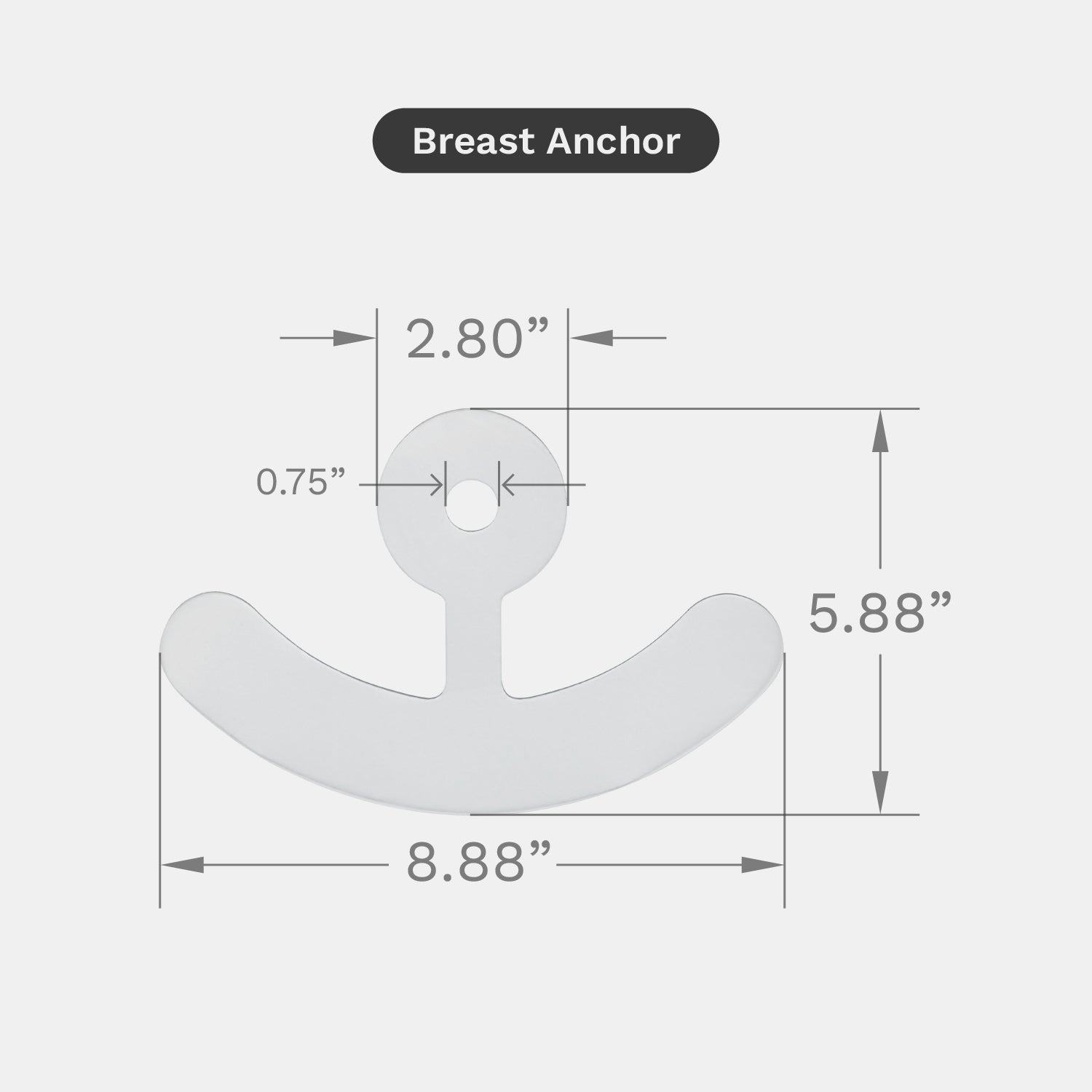
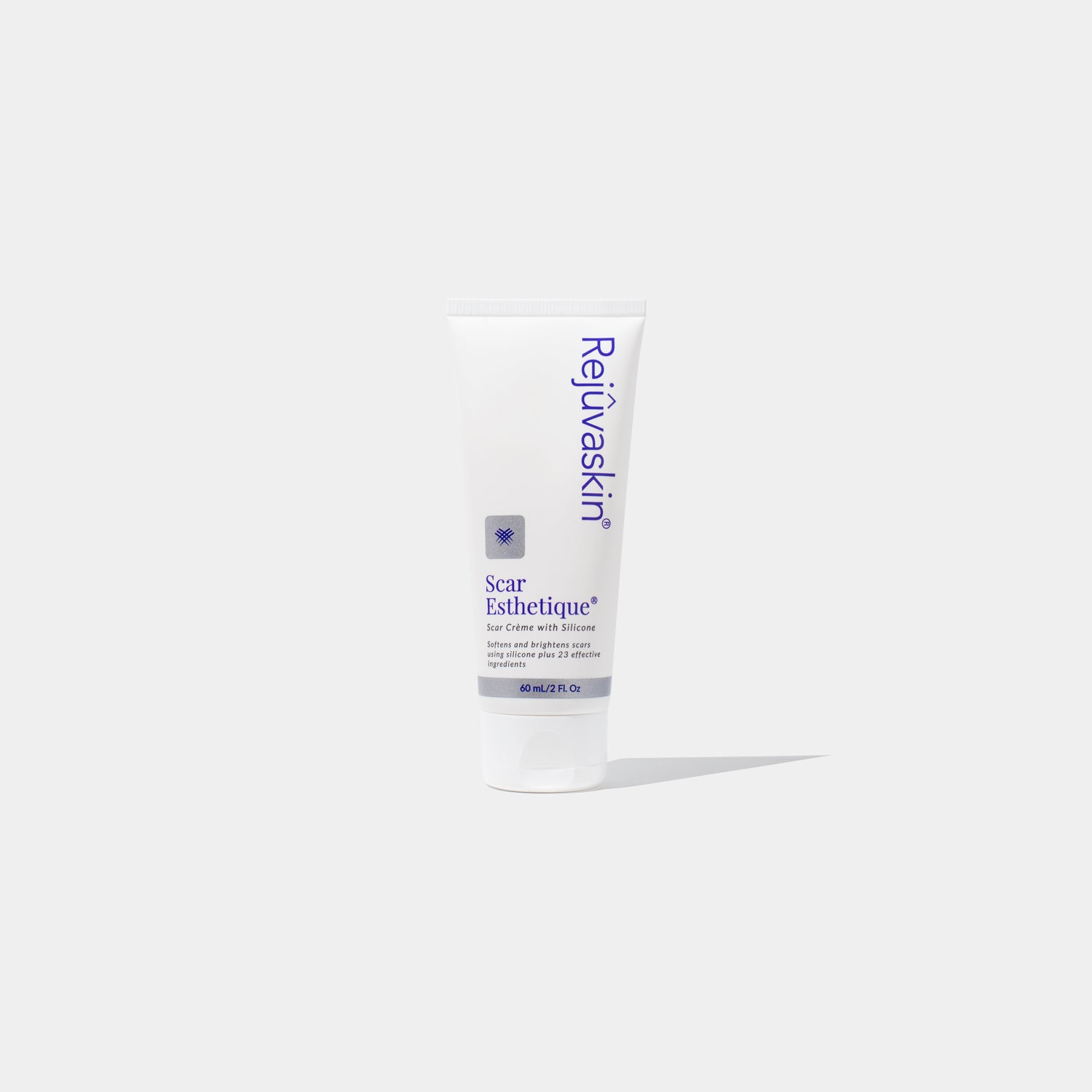
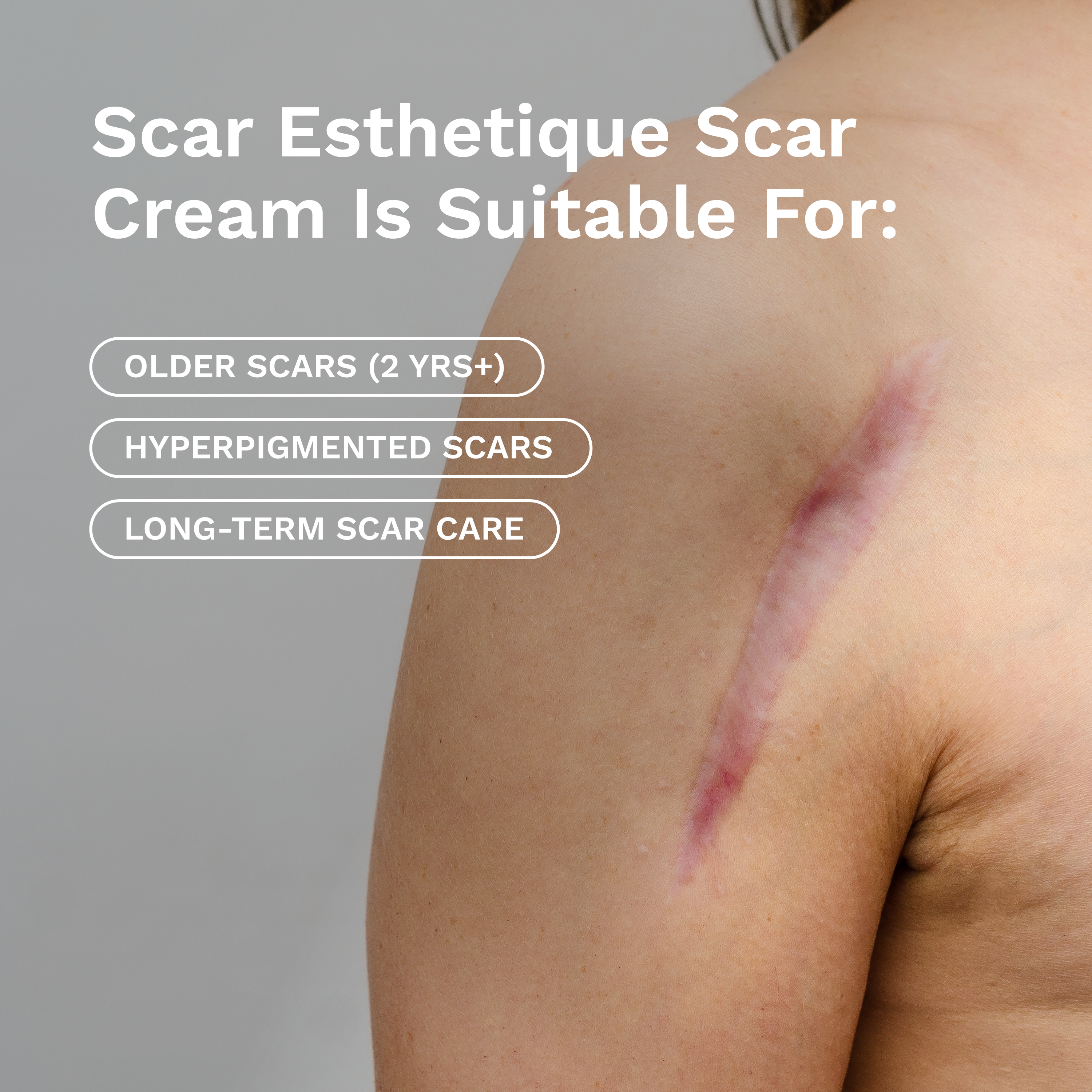








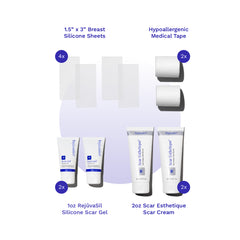
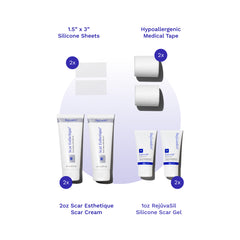

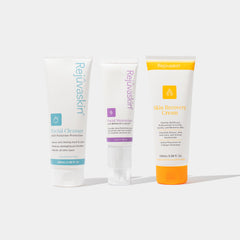

Leave a comment